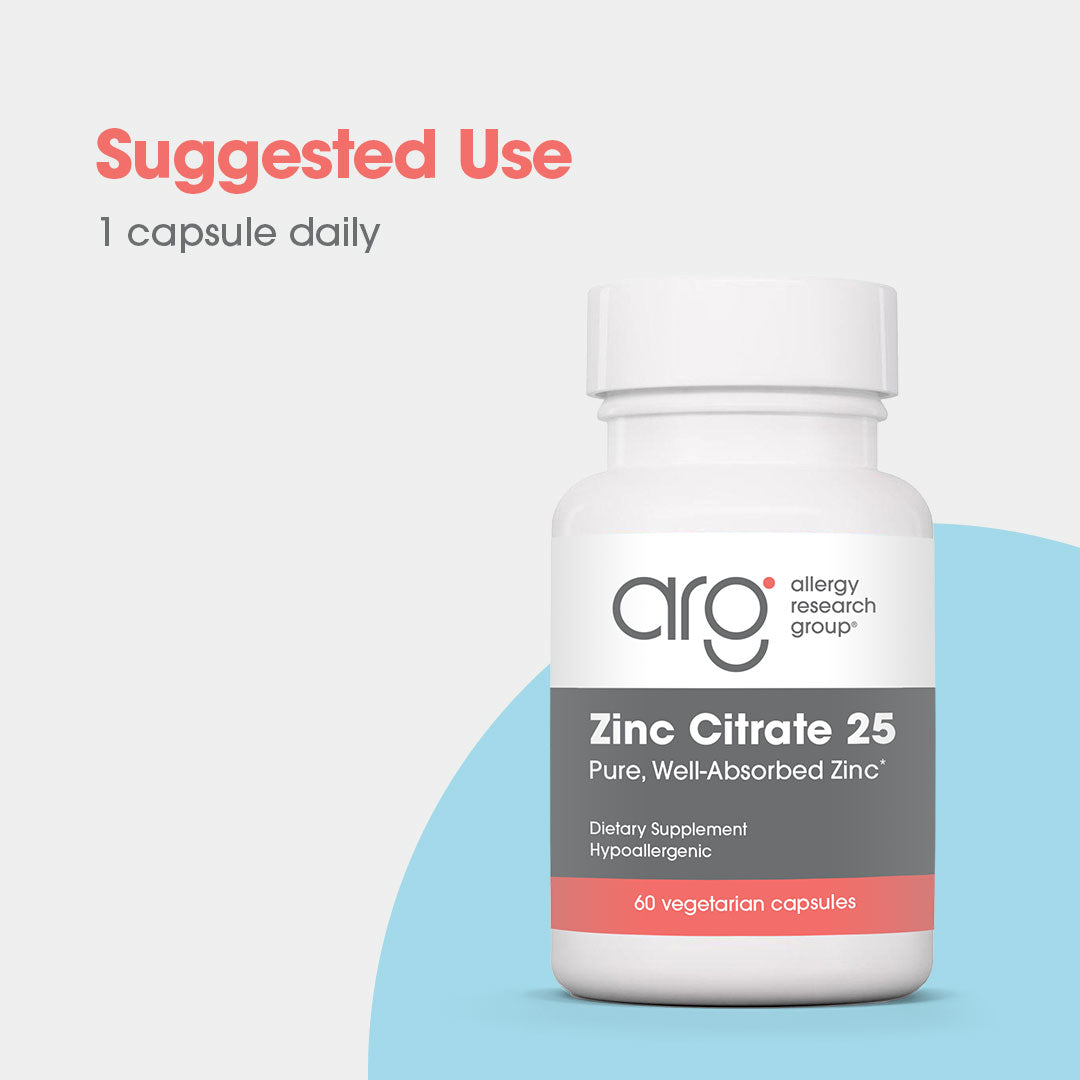Essential Zinc Support for Immunity, Growth, and Cognitive Health*
What It Does
Zinc Citrate 25 mg provides a gentle, bioavailable form of zinc to support immune function, growth, brain health, and reproductive wellness.* It helps replenish a critical mineral that the body cannot store in large amounts and must obtain consistently from the diet.*
How It Works
• Zinc is involved in over 300 enzymatic reactions including those related to energy production, immune defense, and protein metabolism.*[1]
• Supports immune homeostasis, influencing both innate (e.g., neutrophils, NK cells) and adaptive (T and B cells) responses.*[2]
• Promotes cellular growth and DNA structure, including “zinc finger” proteins that regulate gene expression.*[1]
• Supports emotional and cognitive well-being, with zinc contributing to neurotransmitter function and neuroprotection.*[3-5]
• Critical for reproductive health, including hormone regulation, oocyte maturation, and testosterone synthesis.*[7-9]
• Vegetarians and vegans may have increased need for zinc.*[10]
• Zinc citrate has been shown to be more absorbable than zinc oxide and comparable to gluconate.*[11]
Who It’s For
Designed for individuals seeking a foundational level of daily zinc to support immunity, cognition, and reproductive health and ideal for vegetarians, older adults, and those with increased dietary needs.*
Special Features
Formulated with zinc citrate, a well-tolerated and well-absorbed form of zinc backed by comparative absorption data.*
References
1. Stiles LI et al. Clin Exp Med. 2024;24(1):38. doi:10.1007/s10238-024-01302-6
2. Wessels I et al. Nutrients. 2017;9(12):1286. doi:10.3390/nu9121286
3. Petrilli MA et al. Front Pharmacol. 2017;8:414. doi:10.3389/fphar.2017.00414
4. Ranjbar E et al. Nutr Neurosci. 2014;17(2):65–71. doi:10.1179/1476830513Y.0000000066
5. Sun R et al. Biomolecules. 2022;12(7):1000. doi:10.3390/biom12071000
6. de Vargas LDS et al. Nutrients. 2023;15(20):4396. doi:10.3390/nu15204396
7. Garner TB et al. Biol Reprod. 2021;104(5):976–94.
8. Prasad AS et al. Nutrition. 1996;12(5):344–8.
9. Allouche-Fitoussi D et al. Int J Mol Sci. 2020;21(20):7796. doi:10.3390/ijms21207796
10. Foster M et al. J Sci Food Agric. 2013;93(10):2362–71.
11. Wegmüller R et al. J Nutr. 2014;144(2):132–6.



